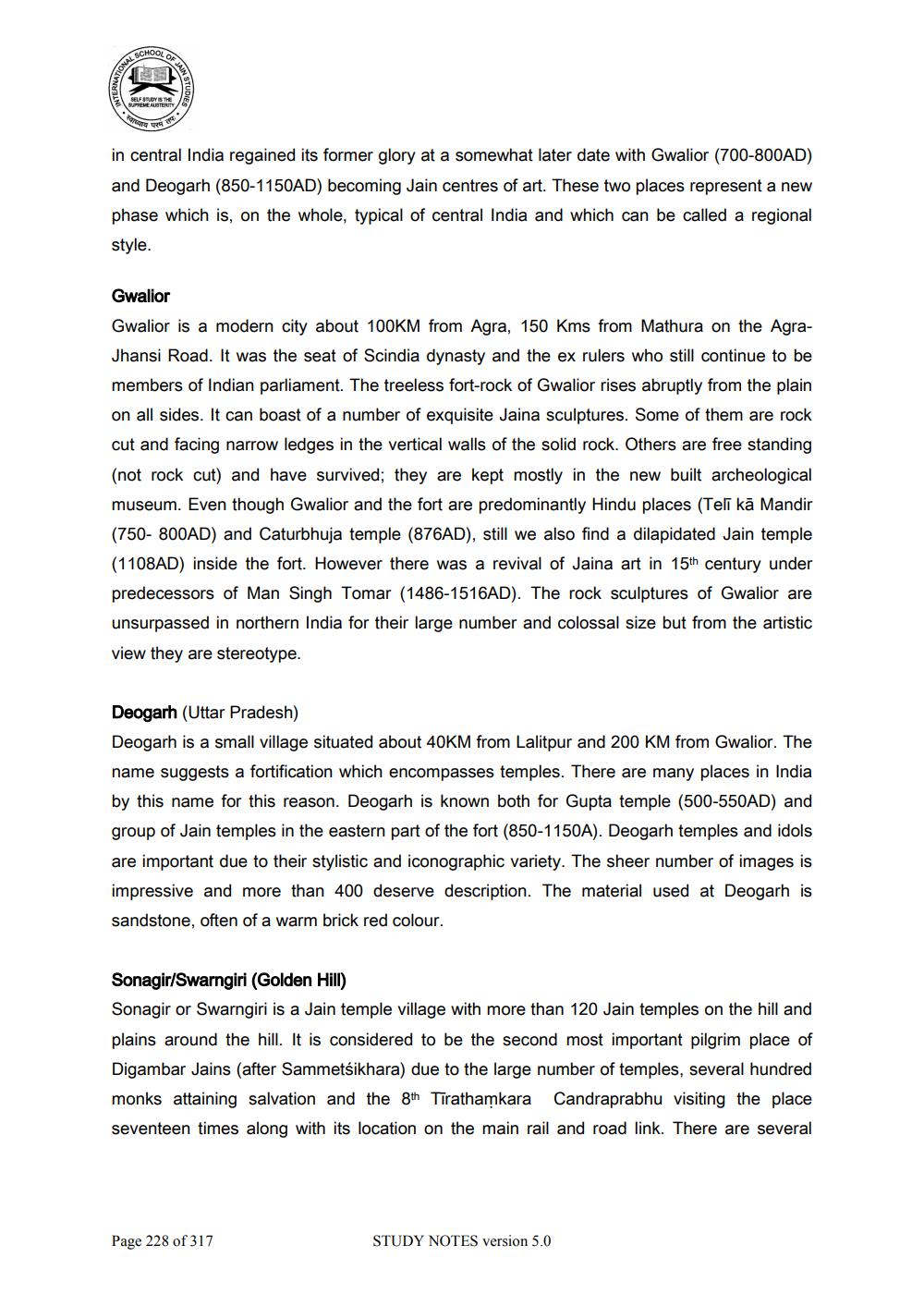________________
SCHOOL
TIONAL
OF
SELF STUDY IS THE
SUPREME AUSTERITY,
N STUDIES
in central India regained its former glory at a somewhat later date with Gwalior (700-800AD) and Deogarh (850-1150AD) becoming Jain centres of art. These two places represent a new phase which is, on the whole, typical of central India and which can be called a regional style.
Gwalior
Gwalior is a modern city about 100KM from Agra, 150 Kms from Mathura on the AgraJhansi Road. It was the seat of Scindia dynasty and the ex rulers who still continue to be members of Indian parliament. The treeless fort-rock of Gwalior rises abruptly from the plain on all sides. It can boast of a number of exquisite Jaina sculptures. Some of them are rock cut and facing narrow ledges in the vertical walls of the solid rock. Others are free standing (not rock cut) and have survived; they are kept mostly in the new built archeological museum. Even though Gwalior and the fort are predominantly Hindu places (Telī kā Mandir (750-800AD) and Caturbhuja temple (876AD), still we also find a dilapidated Jain temple (1108AD) inside the fort. However there was a revival of Jaina art in 15th century under predecessors of Man Singh Tomar (1486-1516AD). The rock sculptures of Gwalior are unsurpassed in northern India for their large number and colossal size but from the artistic view they are stereotype.
Deogarh (Uttar Pradesh)
Deogarh is a small village situated about 40KM from Lalitpur and 200 KM from Gwalior. The name suggests a fortification which encompasses temples. There are many places in India by this name for this reason. Deogarh is known both for Gupta temple (500-550AD) and group of Jain temples in the eastern part of the fort (850-1150A). Deogarh temples and idols are important due to their stylistic and iconographic variety. The sheer number of images is impressive and more than 400 deserve description. The material used at Deogarh is sandstone, often of a warm brick red colour.
Sonagir/Swargirl (Golden Hill)
Sonagir or Swarngiri is a Jain temple village with more than 120 Jain temples on the hill and plains around the hill. It is considered to be the second most important pilgrim place of Digambar Jains (after Sammetsikhara) due to the large number of temples, several hundred monks attaining salvation and the 8th Tirathamkara Candraprabhu visiting the place seventeen times along with its location on the main rail and road link. There are several
Page 228 of 317
STUDY NOTES version 5.0




